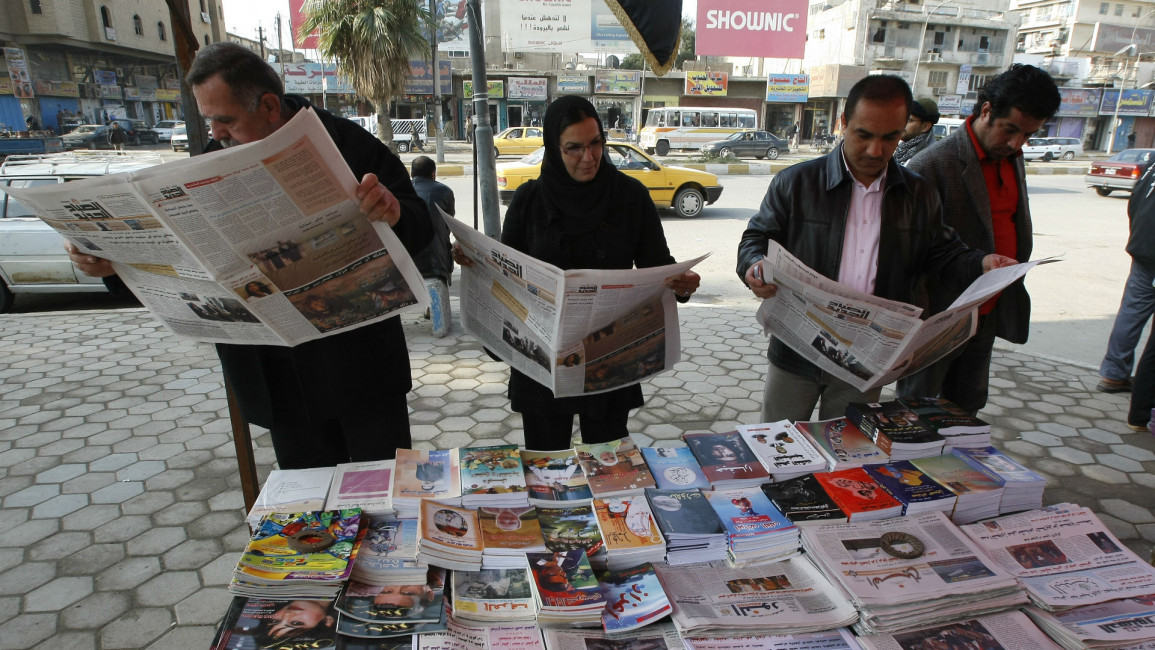
The changing face of Iraq's newspapers
The changing face of Iraq's newspapers
Features: Having taken on many identities, newspapers in Iraq have become mouthpieces for their wealthy owners, reports Otail al-Jaffal.
1 min read
In 2006 and 2007 Iraqi newspapers became mouthpieces for various militias [AFP]
The Iraqi media has been reborn many times, but the most dangerous of these was after the US occupation in spring 2003 when the country was mired in chaos.
When it arrived in Baghdad the US army launched several newspapers that depicted it as a liberating not an occupying force, and portraying the US marines as role models.
The tabloid press also depicted the Baath regime as an authoritarian police state to make Iraqis hate Saddam Hussein's dictatorship even more than they already did.
There were over 200 papers in the country at the time. However, they were poorly written, with unskilled journalists unable to tackle the important issues the country was facing.
In 2006 and 2007, the newspapers became noticeboards for corpses killed in sectarian fighting, and mouthpieces for various militias and those financing them. The same was seen in June last year when the Islamic State group seized control of around a third of the country.
Due to structural restraints, the biggest newspaper in Baghdad cannot print more than 2,000 copies. The cost of printing, distributing and paying salaries means most media organisations run at a loss and are forced to depend on parties and prominent figures for financial support.
This article is an edited translation from our Arabic edition.



